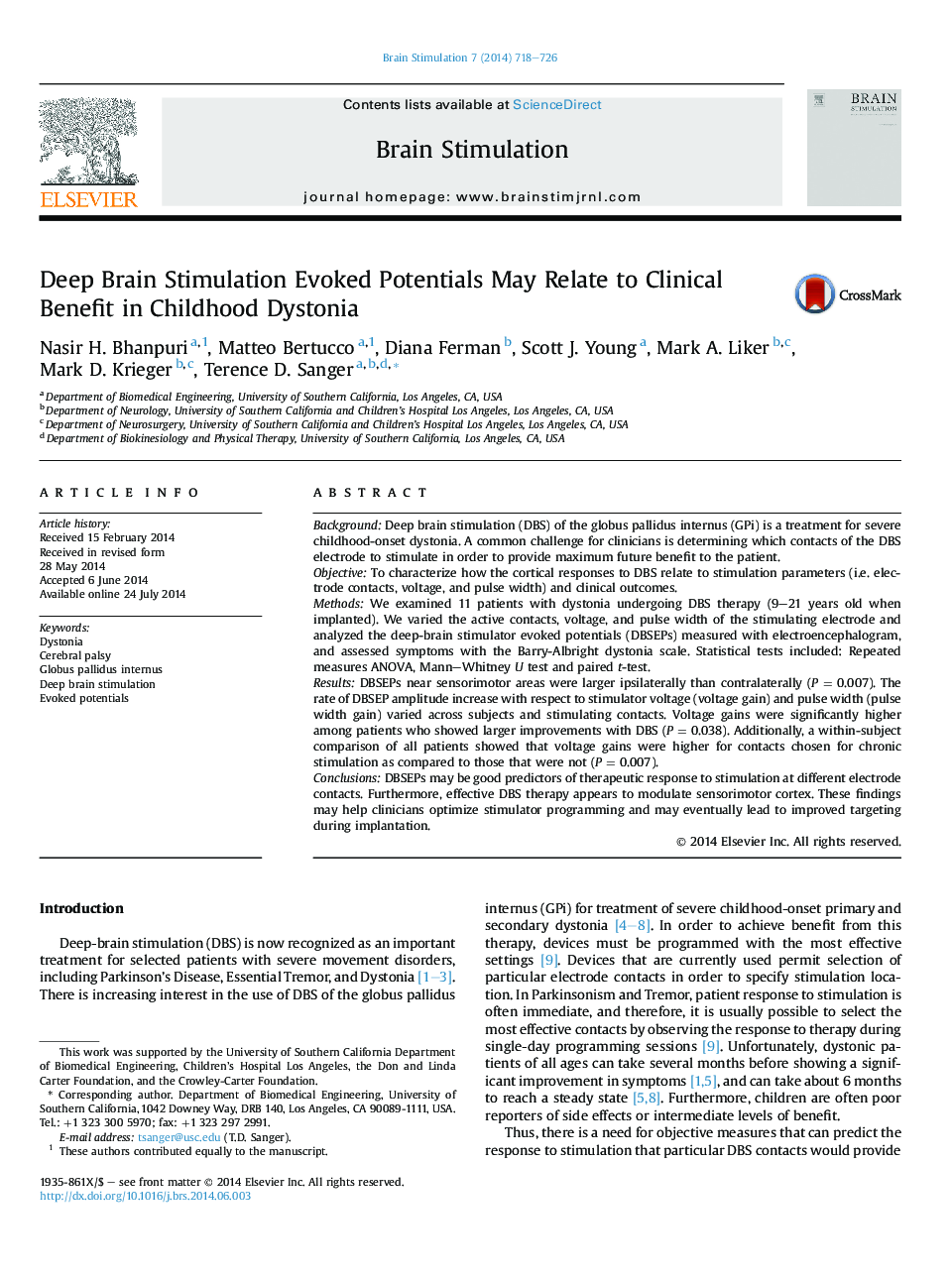| کد مقاله | کد نشریه | سال انتشار | مقاله انگلیسی | نسخه تمام متن |
|---|---|---|---|---|
| 6005598 | 1184667 | 2014 | 9 صفحه PDF | دانلود رایگان |

- We examined children with dystonia receiving deep brain stimulation (DBS) therapy
- We measured changes in cortical activity evoked by stimulation of basal ganglia
- Specific characteristics of evoked activity were related to clinical improvements
- Analysis of electroencephalogram may improve DBS therapy
BackgroundDeep brain stimulation (DBS) of the globus pallidus internus (GPi) is a treatment for severe childhood-onset dystonia. A common challenge for clinicians is determining which contacts of the DBS electrode to stimulate in order to provide maximum future benefit to the patient.ObjectiveTo characterize how the cortical responses to DBS relate to stimulation parameters (i.e. electrode contacts, voltage, and pulse width) and clinical outcomes.MethodsWe examined 11 patients with dystonia undergoing DBS therapy (9-21 years old when implanted). We varied the active contacts, voltage, and pulse width of the stimulating electrode and analyzed the deep-brain stimulator evoked potentials (DBSEPs) measured with electroencephalogram, and assessed symptoms with the Barry-Albright dystonia scale. Statistical tests included: Repeated measures ANOVA, Mann-Whitney U test and paired t-test.ResultsDBSEPs near sensorimotor areas were larger ipsilaterally than contralaterally (PÂ =Â 0.007). The rate of DBSEP amplitude increase with respect to stimulator voltage (voltage gain) and pulse width (pulse width gain) varied across subjects and stimulating contacts. Voltage gains were significantly higher among patients who showed larger improvements with DBS (PÂ =Â 0.038). Additionally, a within-subject comparison of all patients showed that voltage gains were higher for contacts chosen for chronic stimulation as compared to those that were not (PÂ =Â 0.007).ConclusionsDBSEPs may be good predictors of therapeutic response to stimulation at different electrode contacts. Furthermore, effective DBS therapy appears to modulate sensorimotor cortex. These findings may help clinicians optimize stimulator programming and may eventually lead to improved targeting during implantation.
Journal: Brain Stimulation - Volume 7, Issue 5, SeptemberâOctober 2014, Pages 718-726